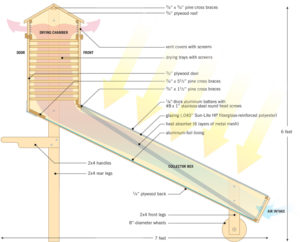Types of dehydrators for microgreens
Types of food dehydrating
There are a few ways to dehydrate your food, but there are some types of dehydrators for microgreens some methods are more successful than others. Advances in technology have helped to improve the rate of dehydration, reducing the chance your food will spoil. So when you hear about dehydrating it is a good idea to have some of these processes on the brain. Here are the most common methods used today. Although I am not really sure of who uses these, so if you do let me know.
Sun-drying/ Air drying
It’s hard to think of an older or simpler way to preserve food than sun drying. For about 12,000 years, people have sliced fruit and placed it on racks or lines in the sunshine. Sun drying is beneficial in places with long periods of the hot sun. The ancient Romans commonly ate raisins and dried figs, thanks to their Mediterranean climate. But anywhere with a minimum temperature of 86 F and relative humidity of 60% will work. Just remember that fruit takes several days to dry thoroughly. Place on a mesh screen—avoiding anything galvanized—and cover with a second screen to deter flies and other insects. Air drying is extremely similar the only difference is that air drying takes place in the shade. This would be a good method to remember when on an island completely alone although I suppose finding a variety of fruits and vegetables on an island may be limited as well as where are you going to find a knife. Next…
Solar drying
A step up from sun drying, solar drying uses a dehydrator powered by the sun to dry your food passively. Since there’s no element to provide heat or fans to circulate the air, solar drying uses no electricity. Solar dryers work outdoors and are usually designed like a mini tabletop greenhouse. Some solar drying dehydrators are large and while completely green for the environment can be hard to store and place in a small yard. Check out this dehydrator we located on-line complete with directions on how to build it. 
Oven drying
Oven drying utilizes your oven to dry food around 140 F slowly. Because ranges are so large, they’re not the most efficient dryers on the block. But they can save you the trouble of buying an extra appliance if quick drying is your goal. They can also warm up your house since you’ll need to prop the door open to let the moisture escape. If you’re thinking of drying food in your oven, check to make sure your range goes low enough. Anything over 140 F will cook your food instead of drying it. In our case, this wouldn’t work because we need to keep the temperature much lower than 140 F in order to maintain the nutritional value of our microgreens. I don’t know if these types of dehydrators for microgreens
Electric dehydrating
Add modern technology, and presto you have electric dehydrators. These little powerhouses come equipped with fans and elements to quickly and efficiently dry your food. That means little spoilage and a tasty result. Most electric dehydrators also come with a temperature gauge and adjustment dial. This helps to speed or slow drying time, depending on what you’re processing. For us, this is critical as we need to get to a low enough temperature to dehydrate microgreens. When I began dehydrating microgreens I decided to go with an electric dehydrator (imagine that) I actually purchased a Chefman dehydrator when I started. I am about to obtain a commercial dehydrator that will allow me to expand our salt line.
So if you want to learn about the specific process, I use to dehydrate my microgreens or if you wish to access the secret recipes, follow the link. Use code blog to receive a discount on either the PDF or on the salts or dehydrated microgreens powder.

